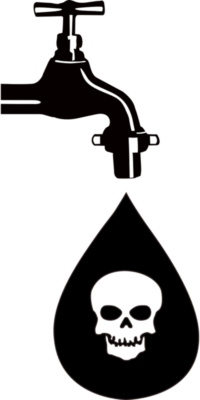If someone had asked me 15 years ago if I thought I had heavy metals and toxins in my body I would have answered no. After having my eyes opened to all of the toxic exposures we get on a daily basis (women will be exposed to often over 100 toxins before we ever leave the house in the morning), I now say we all have toxins in our body. Our body has several detoxification systems to rid ourselves of these toxins with the liver and the skin being the top two. However, sometimes these systems aren’t enough especially when the body is flooded with toxins and they get stored away in our bones, our fat and other organs.
The four big heavy metals exposures that are common are:
- Lead- usually from lead pipes, paint, pottery, cosmetics
- Mercury – contaminated air, water and food (fish may be high), amalgam fillings, immunizations, old thermometers
- Arsenic – found in our soil, contaminated groundwater, foods, pressure treated wood
- Cadmium – cigarettes (even second hand smoke), batteries, plastics, foods high in cadmium (highest in grains & legumes)
However, we are exposed to hundreds of toxins on a daily basis. Sneaky sources of toxins are our cosmetics, cleaning products, home repair, yard sprays and of course our air and water. Workers involved with welding, plumbing, oil refining, handling of disposal wastes, manufacturing of pigments & coatings are other areas of exposures. Oilfield wastewater and ground contamination is a big source in Oklahoma as well as many other oil rich states. I read that we only have regulator approved tests for 25% of the 1600 chemicals that may be present in wastewater! Yikes!!
Symptoms of heavy metal toxicity can vary depending on level of exposure and how your body detoxifies. Chronic toxic exposure can lead to trouble with the following:
- Energy
- Reproductive function
- Degenerative conditions
- Neurological function
- Immune function
Symptoms may include:
- Nausea
- Vomiting
- Diarrhea
- Abdominal pain
- Anemia
- Confusion/brain fog
- Fatigue
- Tremors
- Headaches
- Kidney issues
- Tingling sensations in hands, feet or around your mouth
- & more…..
READ ON to learn about the different ways to test for heavy metals….
There are several methods to test for heavy metals and it is important to understand the differences:
Blood
Urine
Hair analysis
Blood tests may be useful when there is an overwhelming exposure that is sudden and recent but it will miss any long term, lower level exposure.
Hair analysis gives you what you have been exposed to over the past several months. Hair grows on average 1-2cm per month and toxic elements may be 200-300 more concentrated in hair than in blood or urine. It is useful for detection of exposure to elements like arsenic, aluminum, mercury, cadmium, lead and antimony. The CDC (center for disease control) actually acknowledges the hair analysis test as a maternal and infant marker of exposure to methylmercury which is one of the toxic forms of mercury found in fish. I want to point out again that this method of testing is good for exposures that occurred 1-2 months ago and will not give you distant past exposure/load information or acute, recent exposure.
Urine testing can be a first morning void or a 24 hour urine for even more accuracy. There are some proponents of a “challenged” urine test where DMSA or EDTA are given to mobilize the toxins from sequestered tissues and then do the collection. Opinions vary greatly on the validity of challenged tests. I believe the most important consideration when deciding on whether or not to do a challenge test is how you detoxify. If you have a hard time detoxifying and you mobilize these toxins then the risk of more symptoms is even greater. It doesn’t mean you can’t do a challenge test but maybe you start with a regular test first and see if there are any overwhelming metals and then do a softer challenge ideally working on the detoxification system prior to testing.
A special note, each form of testing may report a different breakdown product of a metal. For example, the methylmercury which is found in fish is very neurotoxic (meaning it damages nerves). Blood and hair analysis will show this toxic metal but urine will only show the inorganic form of mercury.
If you have a toxic load then programs are developed to help you detoxify using a variety of modalities.
Call us today if you would like to explore heavy metal testing!
To your health,
Laura









